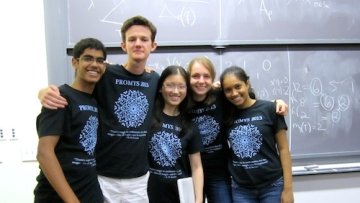BRST Cohomology, Extraordinary Invariants and the Zen Splitting of SUSY
Abstract
The chiral scalar superfield has interesting BRST cohomology, but the relevant cohomology objects all have spinor indices. So they cannot occur in an action. They need to be coupled to a chiral dotted spinor superfield. Until now, this has been very problematic, since no sensible action for a chiral dotted spinor superfield was known. The most obvious such action contains higher derivatives and tachyons.
Now, a sensible action has been found. When coupled to the cohomology, this action removes the supersymmetry charge from the theory while maintaining the rigidity and power of supersymmetry.The simplest example of this phenomenon has exactly the fermion content of the Leptons or the Quarks. The mechanism has the potential to get around the cosmological constant problem, and also the problem of the sum rules of spontaneously broken supersymmetry.


